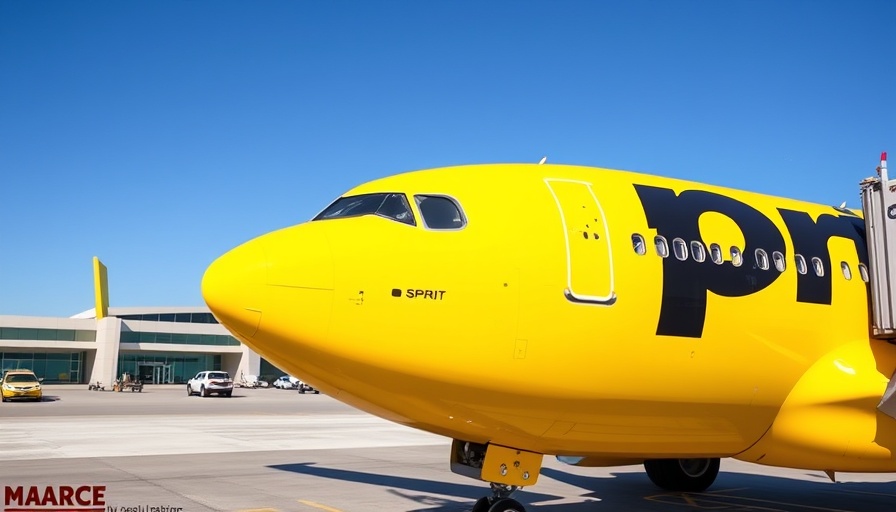
Spirit Airlines Faces Financial Turbulence
As the airline industry continues to navigate a challenging economic landscape, Spirit Airlines has announced significant changes that are shaking up its network. On October 31, the budget carrier will cease operations at Minneapolis-St. Paul International Airport (MSP) and Hartford's Bradley International Airport (BDL), a move that signifies a broader trend of contraction within the company amid ongoing financial struggles.
Understanding Spirit's Strategic Withdrawals
According to Spirit's Chief Commercial Officer, Rana Ghosh, these decisions were not made lightly. The airline is tasked with cutting costs and simplifying its operations after filing for Chapter 11 bankruptcy for the second time in under a year. This restructuring is aimed at refocusing Spirit's efforts and stabilizing its operations in the long run. Unfortunately, around 40 routes—roughly a quarter of its network—will be suspended starting in November.
The Broader Context of Airline Challenges
These cuts come on the heels of similar industry contractions; notable competitors, including United Airlines and Frontier Airlines, have strategically expanded their routes where Spirit has recently exited. The trend illustrates a competitive market landscape where available routes are quickly filled by rivals as Spirit's operational footprint shrinks.
A Ray of Hope: Stability After Cuts
Despite these setbacks, Ghosh indicated that no further airport exits are anticipated in the near future, hinting at a possible stabilization following the restructuring. This focus on long-term viability is crucial as Spirit seeks to emerge from a financially precarious situation.
Travelers' Concerns in a Constrained Environment
For travelers, these changes can be disconcerting. Passengers who previously enjoyed routes to destinations like Detroit, Myrtle Beach, Nashville, and Fort Lauderdale may need to reconsider their travel arrangements as flight availabilities dwindle. With a reduction of more than 20% in total flights, according to Cirium, the available options are diminishing significantly.
Emotional and Economic Impacts
These operational changes can have wider ramifications. Beyond inconvenience, the emotional impact on those employed by Spirit is profound. Approximately one-third of flight attendants are facing furloughs as the airline navigates these uncertain waters. The toll this takes on their livelihoods cannot be understated, and it raises critical conversations around job security in the airline sector.
The Future of Spirits: Adaptation and Growth
What's next for Spirit Airlines? The company must adapt to an economic climate that becomes increasingly discerning about air travel choices. In a world that has grown accustomed to budget travel, Spirit's ability to re-establish itself may depend on its agility in navigating this competitive landscape while maintaining service quality. In this pursuit, customer loyalty and effective communication with travelers and employees alike become paramount.
The cuts at Spirit Airlines signal a crucial juncture not only for the airline but for the entire industry grappling with its post-pandemic recovery. As competitors seize on the opportunity to fill the void, it remains to be seen whether Spirit can successfully right its course and emerge stronger from this financial turbulence.
Call to Action
As we monitor the changes in the airline industry, it's crucial for passengers to stay informed about flight options and adjustments. Regularly checking flight availability and being adaptable in travel plans can help you navigate these shifts while still enjoying the journey. Explore travel resources to find the best alternative options to your desired destinations.
 Add Row
Add Row  Add
Add 




Write A Comment